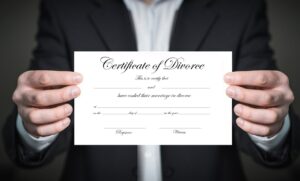Best Way to Find Divorce Records
Divorce is a sensitive issue that affects many families. Whether conducting genealogy research or seeking to learn more about your family history, finding divorce records can be an essential tool for uncovering vital information. However, searching through the vast public records can take time and effort. In this article, we’ll guide you through finding divorce records quickly and efficiently, offering tips on where to search and how to access them easily. Join us as we explore the different ways to obtain these documents so you can quickly embark on your quest for knowledge!
Introduction
When a couple gets divorced, there is a public record of it. This is important for several reasons:
- If you are considering getting married, check the divorce records of your potential spouse to see if they have been divorced before.
- If you are researching your family tree, you may find a divorce record that can provide valuable information about your ancestors.
- If you are curious about someone’s past, checking their divorce records can give you insight into their personal life.
There are a few ways to find divorce records:
- Contact the court clerk in the county where the divorce was filed.
- Search online databases.
- Hire a professional researcher.
Each option has its own pros and cons that you will need to weigh before making a decision.
The clerk of the court will have access to physical copies of divorce records. However, they may not be willing to provide documents to individuals not directly involved in the case. Additionally, there may be a fee for obtaining copies of divorce records from the court clerk.
Searching online databases can be done from the comfort of your home and costs nothing. However, finding reliable and accurate information online can be challenging. Additionally, online databases may only contain limited information about a divorce case.
Hiring a professional researcher can be expensive, but it guarantees that you will receive accurate information. An experienced researcher will be able to search through both physical and electronic records and provide additional context about a particular divorce case.
What are Divorce Records?
Divorce records are public documents that anyone can access. They include information such as the divorcing parties’ names, the divorce date, and the reason for the divorce. You can access it through online databases, government offices, or court clerk’s offices.
There are many reasons why someone might want to access divorce records. They might be researching their family history, trying to find out if someone has been divorced, or looking for information on a current or potential partner. Regardless of the reason, divorce records can provide valuable insights into a person’s past.
How to Access Divorce Records
There are a few ways to access divorce records:
- Contact the court clerk in the county where the divorce was filed.
- Contact the state Department of Health and Vital Records.
- Use an online public records search service.
The court clerk will be able to provide you with a copy of the divorce record if you request it in person or by mail. You must give the case number, the parties’ names, and the divorce date. There may be a fee for copies of the record.

The state Department of Health and Vital Records can provide you with a copy of a divorce record if you request it in person or by mail. You must provide proof of your identity, such as a driver’s license or passport, and pay a fee for the copies.
An online public records search service can also provide you with access to divorce records. These services usually charge a monthly or annual subscription fee.
Where to Find Divorce Records
If you’re looking for divorce records, you can check a few places. The first is the county courthouse where the divorce was filed. You can usually find these records in the public records section. Another option is to check with the state vital records office. This is where most divorces are filed, and they should have a record. Finally, you can search online databases. These will usually have a small fee, but they can be an excellent way to find what you want.
Public vs. Private Divorce Records
Regarding divorce records, there are two types: public and private. Public divorce records are typically available from the court that handles the divorce, while private divorce records are usually only accessible to the parties involved.
There are a few reasons why you should access divorce records. You may be researching your family tree and have hit a roadblock with your parents’ or grandparents’ marriage. Or, you’re considering getting divorced and want to see how common your situation is.
Whatever your reason for wanting to access divorce records, it’s essential to know the difference between public and private records to get the information you need.
Public Divorce Records
As mentioned above, public divorce records are typically available from the court handling the divorce. This means anyone can request copies of these records if they know where to look.
The first place to start is usually the county courthouse where the divorce was finalized. You can go in person or send a written request (most courthouses have forms you can fill out). In some cases, you can find public divorce records online, but this will vary by state and county.
Private Divorce Records
Private divorce records, on the other hand, are not generally available to the public. These documents are typically only accessible to the parties involved in the divorce, their attorneys, and other court personnel.
If you’re not one of the parties involved in the divorce, it can be difficult to access private divorce records. That said, if you have a valid reason to view the records (such as researching your family tree), some states allow individuals to petition the court for access.
Official State Resources for Divorce Records
A few official state resources can help you obtain divorce records. The first is the state court system. Each state has a website that you can use to access court records. Go to the website and search for divorce records in the public record section. If you know the case number, you can also search for it directly on the website.
Another resource is the state vital records office. All births, deaths, marriages, and divorces are recorded here. You can contact the vital records office and request copies of divorce records. They may charge a small fee for this service.
Finally, you can also try contacting your local county clerk’s office. They can provide you with copies of divorce records if they are available.
Other Sources of Divorce Records
There are a few other sources of divorce records that are worth mentioning. These include state and local vital records offices and online databases.
State and local vital records offices are an excellent resource for finding divorce records. Many of these offices keep records dating back several decades, so it is worth checking them out. Online databases are also a good option, as they often have millions of records nationwide.
Conclusion
Divorce records are essential to understanding a relationship’s history and stability. If you need to find divorce records, there are several ways in which you can go about it. By knowing your state’s laws and regulations, searching online databases, and contacting the relevant court directly, you can find what you’re looking for without too much trouble. It is best to use these resources carefully as some information may need to be more accurate and up-to-date.



